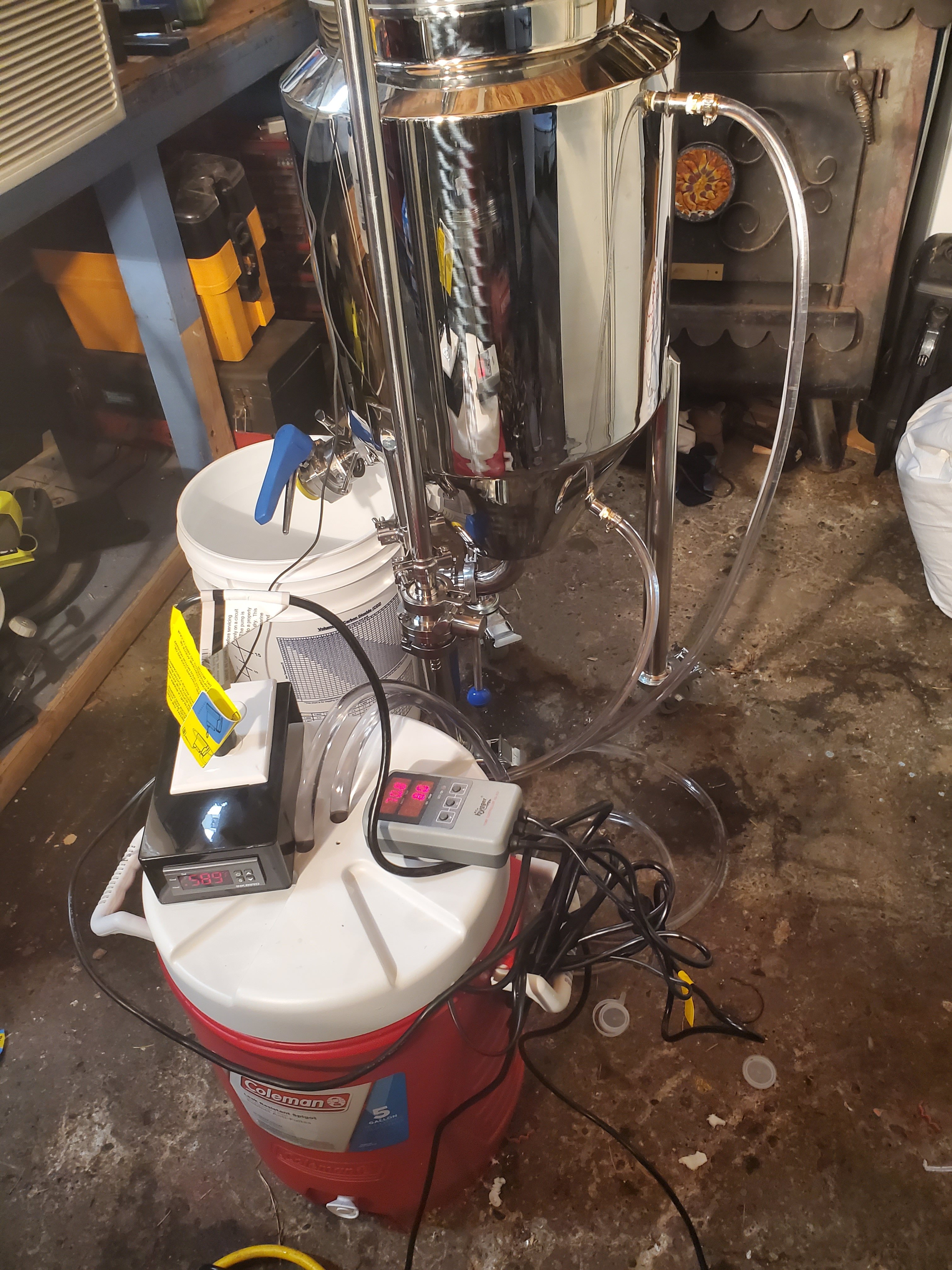So I moved to Colorado and never did I anticipate the idea of not being able to keep my fermenters warm enough! This is the first time I brewed here so I approached it like I did back in Virginia which in hindsight, I screwed up I should have kept the wort a little warmer when transferring to the fermenter. So this morning it was sitting at 60 and of course it's deader than a door nail.
The fermenters are glycol plumbed so I'm trying my best not to flush that out if I don't have to. In a pinch, I ran out and bought a 100W aquarium element (5.5 gallon tank) I'm currently using to try and heat the glycol bath up and if I can get it warm enough I'll see if I can switch to heating mode on the fermenter controller and warm that puppy up. But I need to come up with a long-term answer to this. I'm not sure if I have it already, or maybe I should think about some alternative solutions like fermenter wraps or a stronger element, etc.
Thanks!
The fermenters are glycol plumbed so I'm trying my best not to flush that out if I don't have to. In a pinch, I ran out and bought a 100W aquarium element (5.5 gallon tank) I'm currently using to try and heat the glycol bath up and if I can get it warm enough I'll see if I can switch to heating mode on the fermenter controller and warm that puppy up. But I need to come up with a long-term answer to this. I'm not sure if I have it already, or maybe I should think about some alternative solutions like fermenter wraps or a stronger element, etc.
Thanks!













![Craft A Brew - Safale S-04 Dry Yeast - Fermentis - English Ale Dry Yeast - For English and American Ales and Hard Apple Ciders - Ingredients for Home Brewing - Beer Making Supplies - [1 Pack]](https://m.media-amazon.com/images/I/41fVGNh6JfL._SL500_.jpg)















































